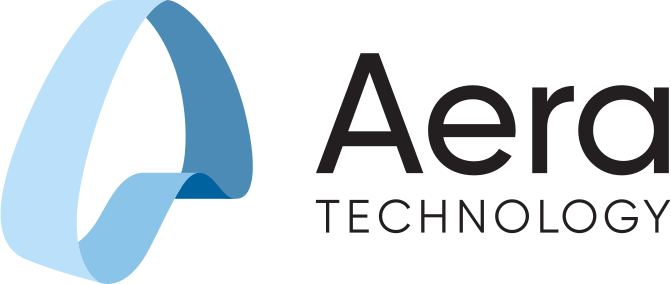Inventory
Automate inventory decisions to optimize service levels, reduce costs, and increase operational efficiency.
Effortlessly manage the complexities of inventory across your supply chain with real-time data and AI automation. Achieve the perfect balance of stock levels, prevent stockouts, and optimize aging inventory to improve service levels, reduce costs, and drive efficiency. Anticipate disruptions and dynamically adapt to changing demand and supply conditions to ensure seamless inventory operations.
Benefits
20%
Service Level Improvement
23%
Reduction in Safety Stock Inventory
23%
Reduction in Material Cost Write-offs
Featured Skills
Watch demo below to see how Aera can optimize inventory levels across the network by dynamically adjusting for demand fluctuations and supply variability.

- Understands Analyzes historical and real-time demand patterns to determine optimal stock levels.
- Recommends Identifies inventory surplus or shortages and provides actionable rebalancing strategies.
- Acts Automates stock reallocation to high-demand areas, ensuring optimal service levels.
- LearnsContinuously refines inventory forecasts and rebalancing algorithms by learning from outcomes to:
- - Reduce excess inventory.
- - Prevent stockouts.
- - Enhance service levels.
Watch demo below to see how Aera can efficiently redistribute inventory across locations to minimize carrying costs and maximize availability.

- UnderstandsDetects overstocked and understocked locations using network-wide visibility.
- RecommendsProposes optimal transfers to balance inventory across the network.
- ActsAutomates stock transfers, ensuring critical products are available where needed most.
- LearnsImproves rebalancing accuracy by analyzing post-transfer outcomes to:
- - Lower carrying costs.
- - Reduce unnecessary stock build-ups.
- - Improve network efficiency.
Minimize waste and optimize material usage by proactively managing aging inventory.

- Understands Identifies inventory at risk of obsolescence based on age and demand trends.
- RecommendsSuggests prioritization of aging stock in production schedules.
- Acts Adjusts production plans to utilize aging materials, reducing waste and associated costs.
- LearnsContinuously refines scheduling logic to:
- - Decrease material write-offs.
- - Optimize production efficiency.
- - Improve sustainability.
Maintain service levels by proactively addressing potential stockouts.

- Understands Monitors demand signals and supply constraints to identify stockout risks.
- RecommendsProvides optimal procurement or transfer solutions to prevent interruptions.
- ActsExecutes replenishment actions, ensuring stock availability.
- LearnsLearns from outcomes to anticipate future risks and enhance service reliability.
Key Decisions Needed
- How do I balance safety stock levels to minimize carrying costs while ensuring availability.
- What steps do I take to mitigate the risk of stockouts during demand surges or supply disruptions.
- How do I optimize inventory movements to reduce waste and improve service levels.
- What is the most effective approach to align inventory strategies with production schedules to minimize obsolescence?
How Aera Helps
- Dynamically adjusts safety stock levels to respond to demand changes.
- Automates stock movements to ensure availability in high-demand locations.
- Proactively identifies stockout risks and automates replenishment actions.
- Integrates real-time visibility with AI-driven recommendations to optimize inventory efficiency.
Key Decisions Needed
How Aera Helps
Dynamically adjusts safety stock levels to respond to demand changes.
How Aera Helps
Automates stock movements to ensure availability in high-demand locations.
How Aera Helps
Proactively identifies stockout risks and automates replenishment actions.
How Aera Helps
Integrates real-time visibility with AI-driven recommendations to optimize inventory efficiency.
Related Skills
![]()
Demand
Automate demand planning to reduce loss, improve accuracy, and optimize inventory levels.

![]()
Logistics
Automate logistics decisions to optimize cost, service levels, efficiency and sustainability

![]()
Order
Automate order management decisions to increase fulfillment speed, accuracy, and customer satisfaction.

![]()
Procurement
Making Direct Procurement More Efficient and Strategic

![]()
Revenue
Boost revenue and profitability with smarter trade promotions, media investments, and pricing strategies.

![]()
Control Tower
Gain end-to-end visibility and insights to streamline operations and enhance decision-making.

![]()
Finance
Automate financial planning and forecasting to drive efficiency, accuracy, and strategic decision-making.

Related Resources
Three Ways to Use AI to Improve your Inventory Performance
Future Now Webinar Series
Addressing Aging Inventory Management with AI: How Aera Decision Cloud™ Reduces Waste and Cost
In today's rapidly evolving market landscape, managing inventory efficiently has become a daunting challenge…
How to Get More Value Out of Your Inventory
Future Now Webinar Series
